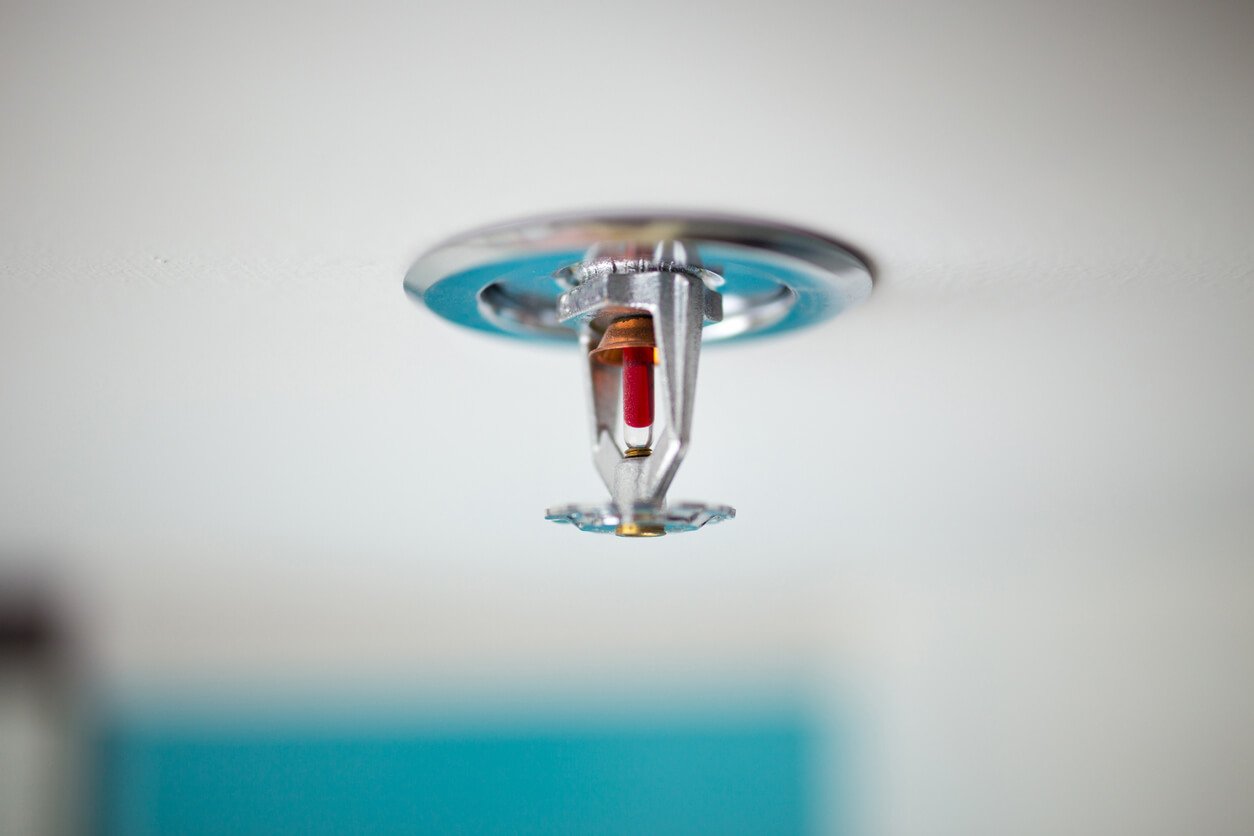5 Tips for Fire Sprinkler Freeze Protection
- Use Proper Insulation
- Keep the Heat Turned On
- Incorporate Heat tracing
- Maintain Auxiliary Drains
- Determine if Antifreeze is Needed
Companies rely on fire sprinkler systems as part of a comprehensive fire safety system. Activated by heat rather than smoke, fire sprinklers offer added safety by being triggered at a specific temperature. It’s no surprise that keeping your fire sprinkler system up to code with regular inspections is essential, but it’s even more so in the winter due to the risk of these systems freezing. That’s why fire sprinkler freeze protection is so important.
Let’s dive into more detail on fire sprinkler winterization, plus some tips to keep your system operational even with colder temperatures.
Can a Fire Sprinkler System Freeze in the Winter?
Just like a home's plumbing and HVAC systems, a business’s fire sprinkler system can freeze in the winter if it isn’t appropriately cared for. A significant concern is that people don’t know the system froze until the temperatures rise above 32 degrees and the pipes burst because, initially, the ice will plug up the burst pipes.
The added time it takes to notice a problem with a fire sprinkler system poses another threat to businesses and demonstrates the need for fire sprinkler freeze protection. Here are five tips for addressing this issue and protecting your sprinkler system from freezing.
5 Tips for Fire Sprinkler Freeze Protection
There are different types of fire sprinkler systems, including wet pipe systems and dry pipe systems. Because of this, specific tips are targeted at certain types of fire sprinkler systems based on functionality and regulatory requirements. The following section covers five tips for protecting different fire sprinkler systems.
1. Use Proper Insulation
Any exposed piping should be well-insulated. The specific material used for the insulation matters because different regions have different thermal resistances. Using the proper insulation keeps the heat from escaping abruptly and prevents pipes from freezing during the winter. According to NFSA, acceptable insulation materials include:
- Batt insulation (faced or unfaced)
- Loose-fill cellulose
- Rigid polyurethane foam
- Spray-applied polyurethane foam
- Other insulators with an appropriate R-Value
2. Keep the Heat Turned On
The main concern for fire sprinkler systems in the winter is when temperatures drop below 32 degrees Fahrenheit. However, keeping temperatures above 40 degrees is preferred when thinking about how to implement fire sprinkler freeze protection protocols. To do so, some companies install space heaters throughout the building as an added precaution. This is especially beneficial if specific areas of the building drop below freezing before others. Of course, it is essential to ensure that any space heaters are used according to safety guidelines.
3. Incorporate Heat Tracing
Select trace heating equipment is certified for use with fire sprinkler systems. The first certification was issued in 2019 by Underwriters Laboratories (UL). In addition, NFPA 13 includes specific requirements for heat tracing (or heat tape) used on wet pipe sprinkler systems, which is the industry benchmark for designing and installing automatic fire sprinkler systems.
It’s important to note that heat tape can only be used on certain components of a fire sprinkler system—the supply piping and branch lines. Three types of electrically heated cables can be used to protect sprinkler systems:
- Series circuit heating
- Parallel circuit heating
- Self-regulating heating
Each option offers unique advantages and disadvantages. Therefore, companies must establish which option is best for their system with the help of certified professionals.
4. Maintain Auxiliary Drains
Dry pipe systems need to be free of water. By maintaining auxiliary drains in your dry pipe first sprinkler system, you can decrease the chances of it freezing in the winter. Other names for auxiliary drains include “drum drips,” “drip legs,” or “condensate drains.” When addressing fire sprinkler freeze protection in dry pipe systems, it’s critical to operate the auxiliary drains daily and employ a drum drip draining process. This process can be implemented with regular fire sprinkler system inspections.
5. Determine if Antifreeze is Appropriate
Wet pipe and dry pipe fire sprinkler systems differ in their maintenance requirements. Specifically, dry pipe fire sprinkler systems are pressurized, which leads to increased complexity and costs for upkeep. In addition, dry pipe systems do not use antifreeze, whereas some wet pipe systems rely on antifreeze loops during the winter. There are strict regulations on acceptable Antifreeze Solutions that can be employed in fire sprinkler systems, so be sure to consult with a certified professional when implementing this tip.
Get Adequate Fire Sprinkler Freeze Protection
Fire sprinkler systems serve an essential purpose in both residential and commercial buildings. Therefore, it’s crucial to properly care for the system throughout the year to prevent weather–related problems.
Get in touch with a trained fire safety technician today to ensure your fire sprinkler is appropriately cared for, especially during the winter months.







